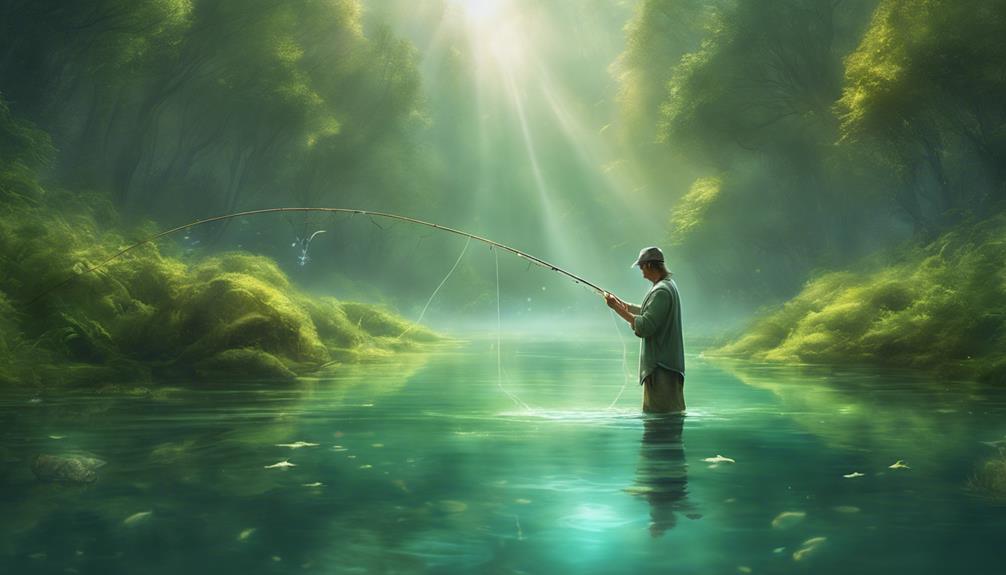If you're looking to make a positive impact on fish populations while enjoying a day out on the water, hand lining might just be the way to go. This traditional fishing method offers more than just a relaxing day of angling; it plays an important role in maintaining the delicate balance of marine ecosystems.
By choosing hand lining, you're not only catching fish but also contributing to the sustainability of our oceans. Curious to learn more about how this method can lead to healthier fish stocks?
Key Takeaways
- Hand lining promotes sustainable fishing practices
- Helps maintain healthier fish populations
- Reduces bycatch and environmental impact
- Supports marine ecosystem health and biodiversity
Benefits of Hand Lining for Sustainability
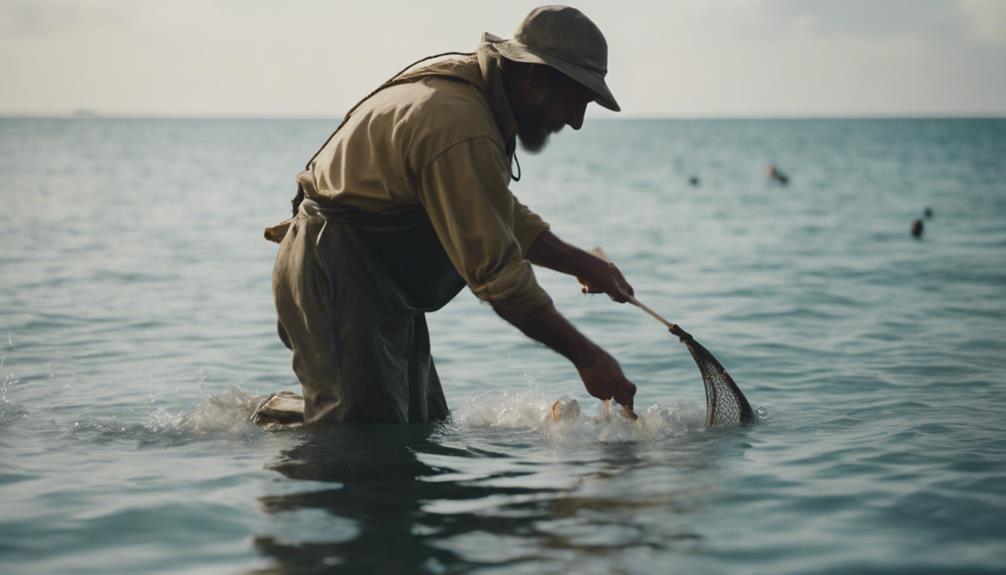
Hand lining offers a sustainable fishing method that helps maintain healthier fish stocks and supports long-term marine ecosystem health. By using a simple hand line instead of large nets or traps, this fishing method targets specific fish species, reducing bycatch and minimizing environmental impact.
Choosing hand lining promotes sustainability in fishing practices, contributing to biodiversity conservation and reducing the risks of overfishing. This approach also helps in preserving marine habitats for future generations by eliminating accidental capture of other marine animals and minimizing disruption to ocean ecosystems.
Opting for hand lining shows a commitment to responsible fishing and an environmentally-friendly attitude, ultimately benefiting the overall health of fish populations and marine ecosystems.
Impact of Hand Lining on Fish Populations

Switching to hand lining from traditional fishing methods directly influences the health and stability of fish populations through targeted fishing practices and reduced environmental impact. Hand lining helps maintain healthier fish stocks by focusing on specific species and minimizing harm to non-targeted fish populations.
The method's selective nature, using hooks and lines, enables fishermen to release undersized or non-targeted fish, promoting overall population health and diversity. By avoiding overfishing and supporting sustainable practices, hand lining contributes to fish conservation efforts.
Compared to other fishing gear, hand lining has a lower impact on marine life and fish populations, making it an environmentally responsible choice for maintaining healthy ecosystems.
Conservation Practices in Hand Lining
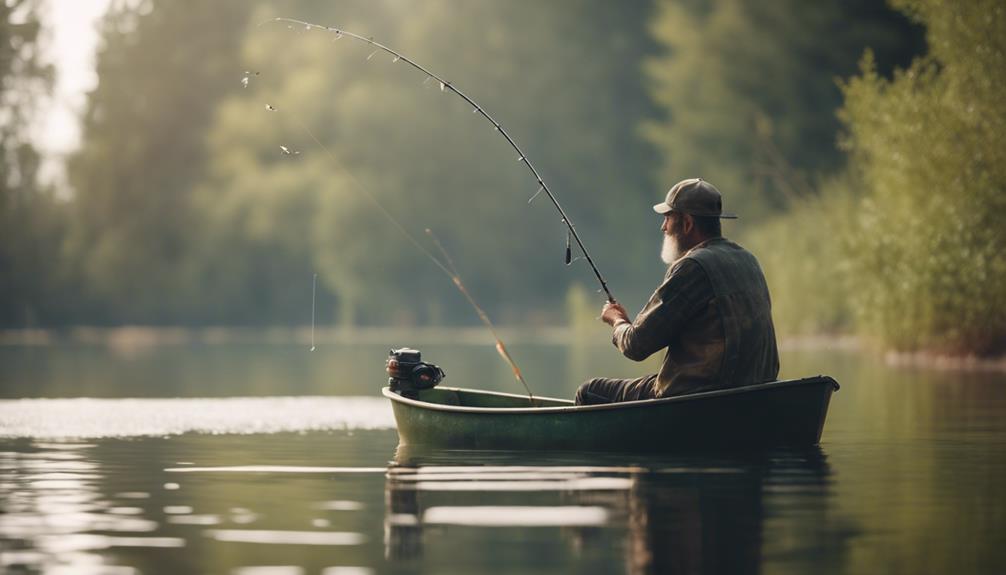
By promoting conservation efforts, hand lining plays an essential role in maintaining healthy fish stocks and preserving marine ecosystems. Hand-line fishing reduces by-catch and the accidental capture of non-targeted species, making it a selective and sustainable practice.
This selective nature helps prevent overfishing, ensuring that fish populations remain robust and diverse. Conservation practices in hand lining also contribute to the protection of marine biodiversity and the overall balance of ecosystems. By focusing on specific species, hand lining aids in safeguarding endangered fish populations and their habitats.
Choosing hand lining over other methods supports the long-term health of our oceans and promotes responsible fishing practices that benefit both fish stocks and the environment.
Role of Hand Lining in Ecosystem Health
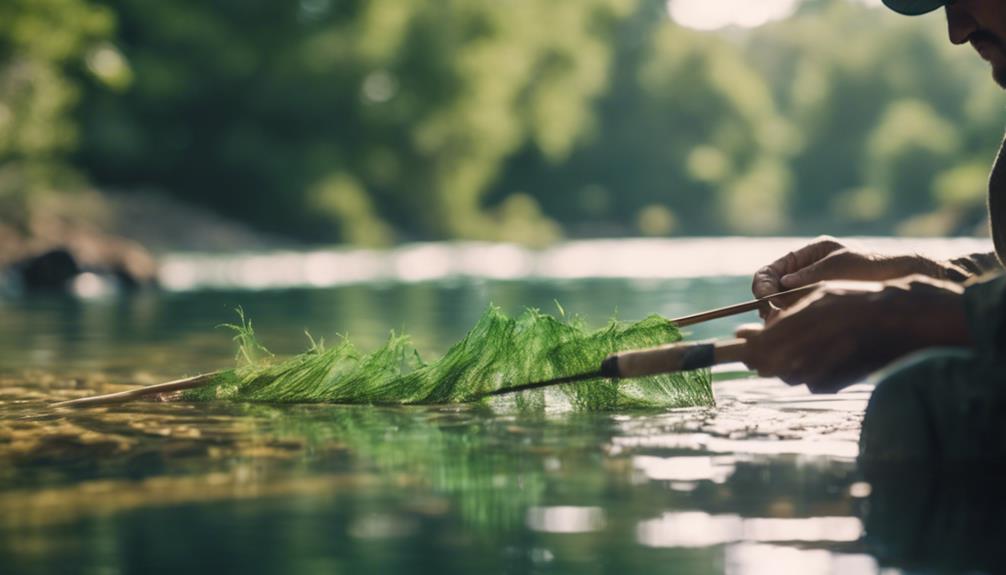
Playing an important role in maintaining ecosystem health, hand lining targets specific species and minimizes environmental impact by reducing bycatch. When considering the fishing line used, this method stands out for its selective nature, ensuring only the intended fish species are caught.
By focusing on sustainable fishing practices, hand lining contributes to the overall health of marine ecosystems. This approach supports biodiversity conservation by minimizing environmental impact and reducing pressure on endangered species. Choosing hand lining over other methods helps preserve marine habitats, promoting a more sustainable future for our oceans.
Embracing hand lining isn't just about catching fish; it's about safeguarding marine ecosystem health and fostering healthier fish stocks for generations to come.
Promoting Sustainable Fishing With Hand Lining
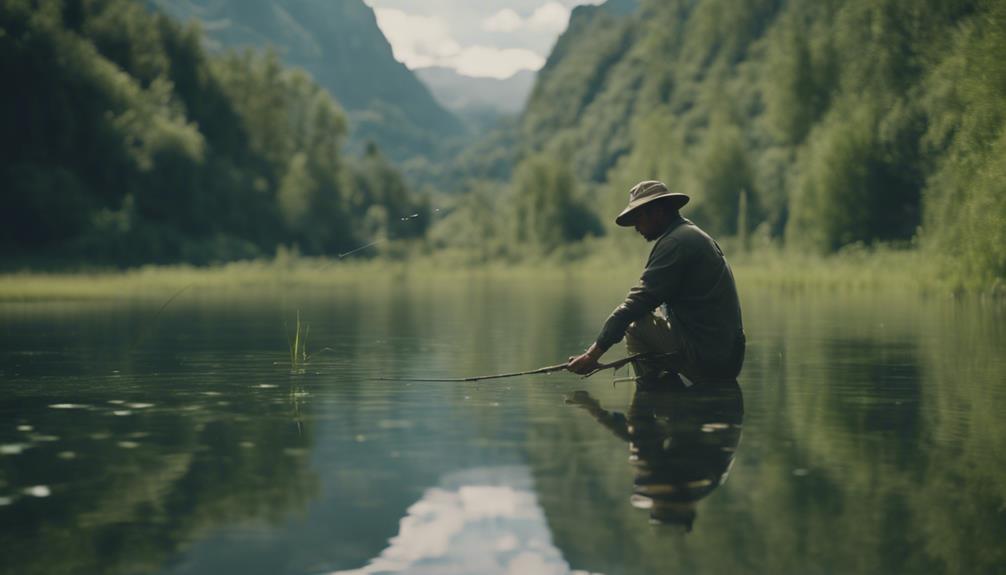
To promote sustainable fishing with hand lining, focus on targeting specific species and minimizing environmental impact. By choosing hand lining over traditional commercial fishing methods, you can help reduce bycatch and avoid overfishing sensitive species.
This approach supports the crucial health of the marine ecosystem by preventing unnecessary harm to marine biodiversity. Hand lining is an eco-friendly way to enjoy sustainable seafood while preserving the delicate balance of ocean ecosystems.
Conclusion
So next time you're out fishing, consider choosing hand lining for a more sustainable option. By using this method, you can help maintain healthier fish stocks, reduce by-catch, and support the long-term health of marine ecosystems.
Make a positive impact on the environment and future generations by promoting hand lining as a more environmentally conscious choice. Let's work together to safeguard our oceans and secure a sustainable future for all.
👨👩👧👦 Dwight’s a married dad of 4 who loves to cast a line 🎣 into both fresh and salt waters. His heart belongs to his family and the sea. 🌊 #FamilyMan #FishingLife #DadOf4 🐟✨

